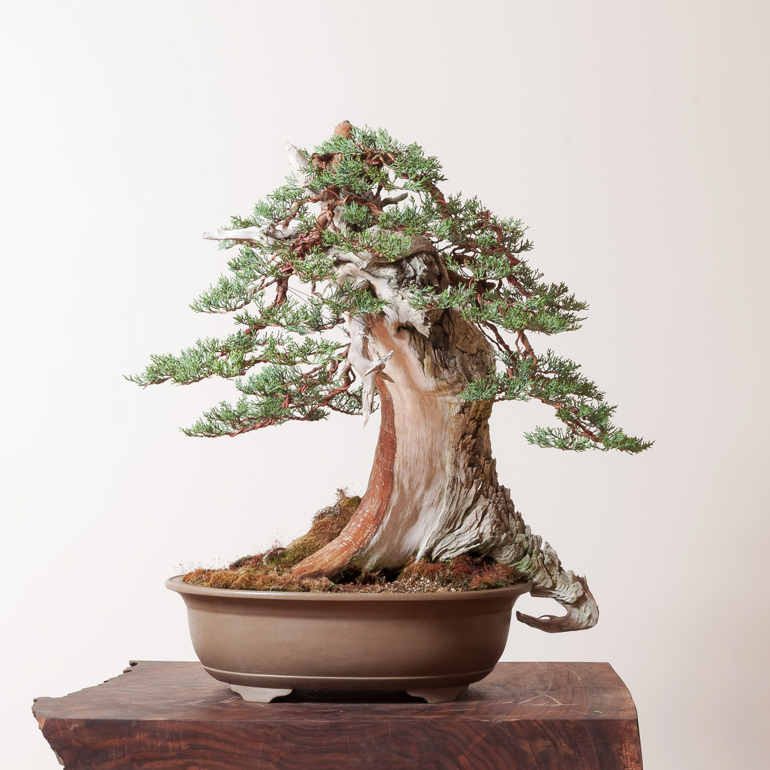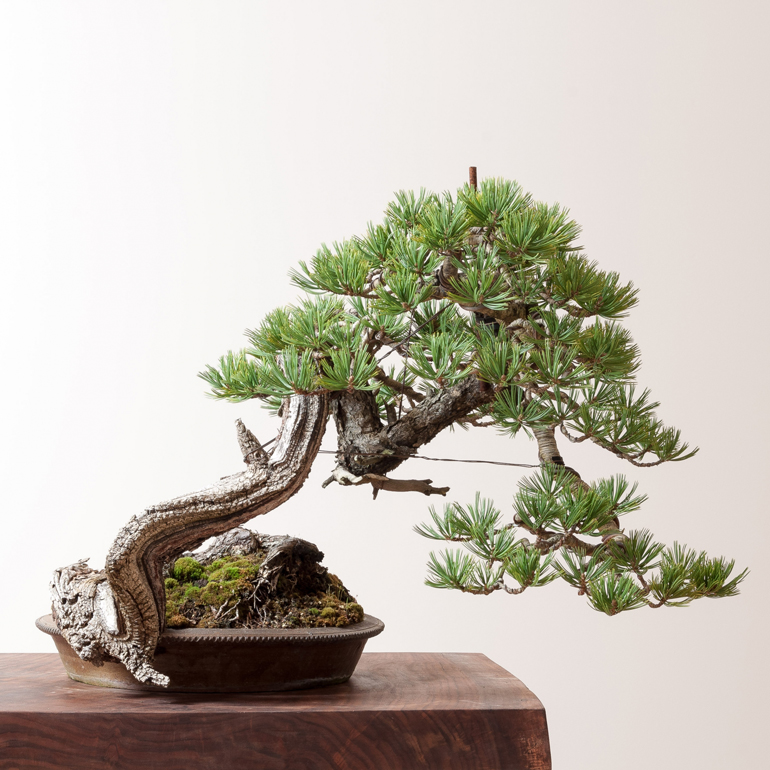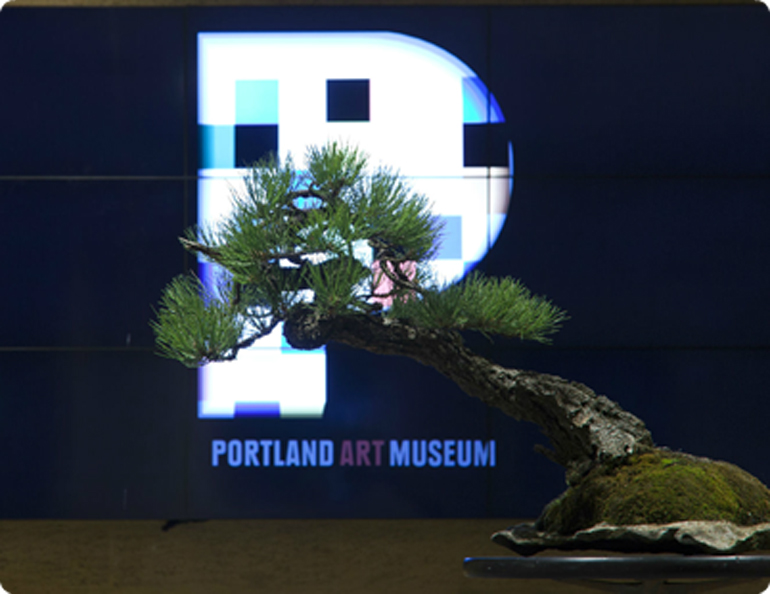
Only Mother Nature. There is no way anyone will ever grow a tree quite like this magnificently wild Rocky Mountain juniper. Taking this a step further, there is almost no way anyone will ever be able to collect and style a tree like this, though there are a handful of people who have the requisite skills and knowledge. In this case, it’s a combination of two who share the skills and knowledge: Randy Knight* found it, collected it and made sure it survived the trauma, and Ryan Neil styled it, potted it and currently keeps it alive and well at his Bonsai Mirai.
When you visit Portland Oregon in September (for the Artisans Cup at the Portland Art Museum), be sure to sign up for the Portland Bonsai Village tour. Portland is a lot about the future (and present) of American bonsai and the Bonsai Village is a big part of that.
Though I’m sure you can find other reasons, when it comes to bonsai, two things about the Portland area stand out: a number of Americans who apprenticed in Japan have settled (or plan on settling) in the Portland area (thus the Bonsai Village), and the Willamette Valley is perhaps the prime North American growing area for temperate zone plants (most of the world’s greatest bonsai are temperate zone trees; though our friends who live in the tropics might take issue).
All the trees in this post are from Ryan Neil’s Bonsai Mirai, the home of one of best collections of North American yamadori bonsai in the world (yamadori are trees collected from the wild).

If you took away the little deadwood hook on the right, this Sierra juniper (Juniperus occidentalis) would still be spectacular. With the hook, it’s tree you’ll never forget.

Ryan calls this a Colorado spruce (Picea pungens). You might know it as a Colorado blue spruce, or simply Blue spruce.

One fairly common yamadori feature is the unpredictable relationship of the roots to the trunk (and the rest of the tree). This can make potting a real challenge, with some pretty strange and often spectacular results. The tree is a Limber pine. Is that a dowel or rebar sticking up?

This California juniper reminds me of any number of Japanese Shimpaku yamadori. Compared to the other trees shown here, it’s quite staid and sober looking. But only compared the others.

Great post! Those Portland guys are certainly doing their part in introducing and promoting the art of bonsai in North America. These collected trees truly inspire me and (I’m sure) other amateur yamadori-seekers out there!
You said “most of the world’s greatest bonsai are temperate zone trees; though our friends who live in the tropics might take issue.”
This tropical friend takes no issue!
The tropics have very limited number of trees available as great yamadori. Buttonwood (Conocarpus erectus,) Pemphis acidula and Premna naoseose may be the exceptions. To complicate things, these trees are often rare and sometimes growing in protected areas.
Believe me, although we’ve managed with Shimpaku and a few other temperate trees, tropical artists would give anything to have a White Pine or Rocky Mountain Juniper in their collection!
Thanks Mary,
That’s good to hear. Makes living in the frozen north a little more palatable.
Colorado Spruce, Picea pungens. May be blue some are not blue but green.
From the picture I’d place my bets on green. The blues are more famous or
better known, but the greens are as spectacular. I could not determine if they
are different varieties or simply natural variances. I believe Colorado Spruce is a more accurate title than Blue Spruce. I grew up in Colorado and have two blues in my yard. Don
Thanks Donald,
Back here and most places online you just see them listed as Colorado Blue Spruce for Picea pungens, but have certainly seen green ones and everything in between.